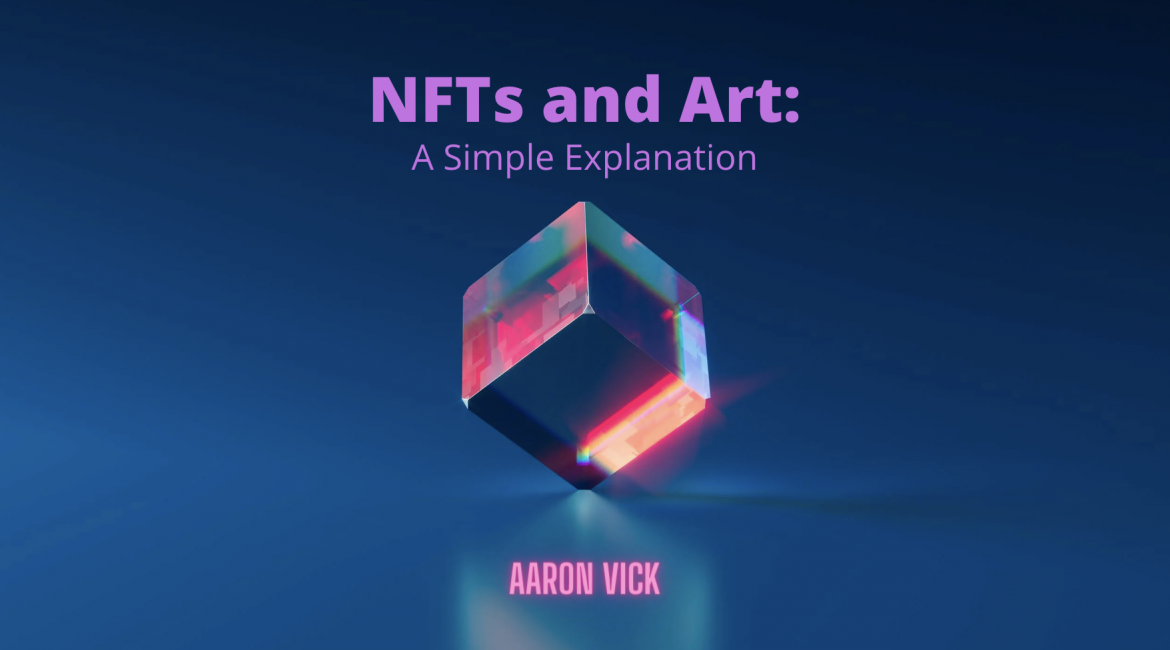If you are new to the Web3 and NFT world, we should describe what NFTs are first. Non-fungible tokens (or NFTs for short) are digital tokens with characteristics that uniquely identify them. They are not fungible: a token with identical characteristics can technically be replaced and assigned to another user of the same value without changing the token itself. Physical currency such as the US dollar is fungible, meaning we could swap dollars, and they would still hold the same value.
Why are NFTs talked about in the art world?
The art world has been digital for some time now. NFTs or non-fungible tokens are a way to transform physical objects into smart contracts. NFTs allow artwork to be collected and later traded.
This article will explain how they function, what they can offer artists, the applications already being used, and where the industry is going in terms of developments. It will also have examples from various projects and case studies from other industries that could potentially get their paws on this technology in the future.
Art Creation and Transfer/Value Storage
NFTs are revolutionizing the art world. You may not see it, but there’s a groundswell.
In 2021, more than $65.1 billion worth of art was sold. However, the art market is plagued with problems that need a solution. The two main problems that plague the art market today are (1) provenance and (2) authenticity.
Provenance is simply a history that documents what an object’s ownership has been from its creation to the present day. Provenance allows customers to trace their item’s ownership and history to verify authenticity, making it easier for people to trust their purchase. Unfortunately, this process is often done by hand, which can be expensive and time-consuming.
The second problem plaguing the art world is authenticity. Many people buy counterfeit pieces of art. The authenticity issue is especially prevalent in online markets, as online marketplaces cannot have the same number of in-person conversations as a physical venue.
Both provenance and authenticity make it much harder for art collectors to trust their purchases. Through the use of NFTs, it is easier to verify art ownership and authenticity.
Provable Ownership and Creation Date
Authenticating ownership can be accomplished through various techniques, but they all require some form of physical interaction between the token holder and their item. Through the use of cryptocurrency, it can be proven that a token is authentic and adds a level of trust to the world of art.
The first use case of NFTs in the art world is to allow artists to prove provenance information (e.g., artist, creation date), which allows collectors to have a more accurate idea of their art’s history.
When a collector purchases an NFT (digital representation of physical art, which can be proven to be authentic), the NFT is registered to the owner’s account. The NFT records its creation date, ownership, and any subsequent transfers of ownership information. This can all be done on-chain. Once the digital collectible is created, it is owned by a single individual, and a single individual can transfer this digital collectible to another person.
This new model allows artists to create digital representations of their original artwork and limit the number of tokens available (hence creating scarcity). These tokens then act as an immutable record of authenticity for each unique item. This allows collectors to verify the authenticity of an item and its history.
A digital representation of a physical object, in this case a work of art, can be bought and traded like any other asset. NFTs are also transferable from one person to another through transactions on the Ethereum network, which is the blockchain technology that most smart contracts run.
This allows artists to gain new markets for their artwork and opens up art that was previously only accessible through private viewing events to general public members. This expands artistic accessibility while increasing privacy for the collector.
Some believe NFTs are the future of ownership and that it is hard to overstate the potential impact of non-fungible tokens on society. What do you think?




